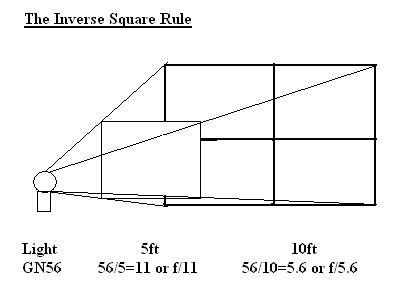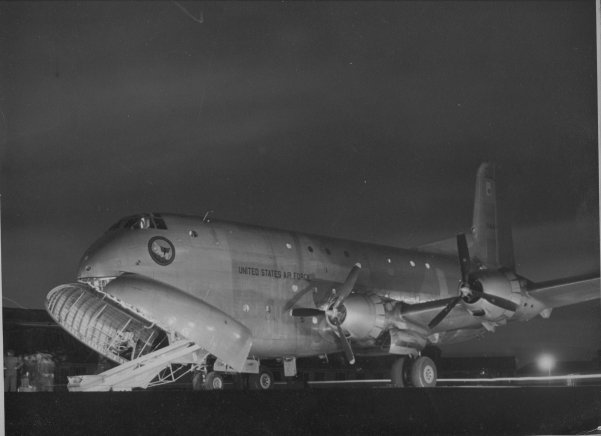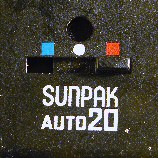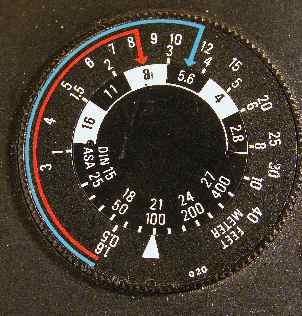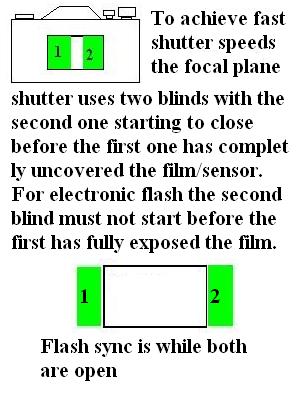|
Basic Flash There are a few basic guidelines to using flash which should, if interpreted correctly, keep you out of trouble however you are using it. Firstly flash is just that, a bright but short burst of light which is shorter in duration than most shutter speeds below 1/2000 second. This means that the shutter speed has no effect on the brightness of the flash. For that we rely on either the aperture or the flash unit itself to sense the light returning from the subject or similar sensing in the camera. The new iTTL system appears to read a 'pre-flash' since digital sensors do not reflect light the way film does. So film cameras can measure returning light through their lens during the exposure but digital cameras do not, as yet. Secondly all light falls off in strength as it travels away from it's source and covers a greater subject area. Inverse square rule which means that twice the distance a quarter of the strength. A quarter of the light requires you to open the aperture by two f/stops. Third point. It doesn't matter where the camera is since it is principally the distance of the flash to the subject which affects the aperture. Fourthly .....for convenience every flash unit can be assigned a Guide Number. Convention stipulates that a unit's Guide Number relates to the f/stop used when the flash is ten feet from the subject and 100ISO film stock or digital sensitivity is being used. Most common in older and small units such as the Sunpak20 was the GN56. That indicates with 100ISO we set the aperture to f/5.6 when the subject is ten feet from the flash. This GN ignores factors such as reflecting walls and ceilings which are absent outdoors so it may be desirable to open up when shooting subjects further away than ten feet. Fortunately in these days of digital one can easilly check a trial exposure, and it's histogram if you have it in the camera. Basic wrap-up ....so with 100ISO set and a Guide Number of 56 one can take shots say at a party of pairs of people at 5ft using f/11, tri-shots at 7'6" at f/8, vertical full length shots at 10ft at f/5.6 and landscape full lengths at 15ft and f/4. That is using a 50mm lens on a 35mm camera. So long as the shutter of an SLR or DSLR is set to 'Sync Speed' or slower you can ignore it. Red and Blue settings of the Sunpak There are a number of different markings on flashguns which indicate that if you set the aperture to the required f/stop you can shoot from the set distance and closer. The unit senses the light returning from the subject and cut's itself off early when you move for a closer shot. On the front of the Sunpak is a three position switch which slides a Neutral Density filter across a photo cell. Centre blocks light from the cell so the unit gives it's all for every flash. This can be wasteful of battery life. Setting to the red position and refering to the dial on the side, where previously you set the film speed to 100ASA [ISO and ASA equal each other] if that is the film you are using, you find a red arrow indicating to use f/8 at about 8feet. Blue indicates f/5.6 at 10 feet. So long as you shoot at those apertures and distances or closer the flash gun will adjust itself. The idea behind more complicated systems is to measure the light returning from the area being photographed But if you can get your camera to let the flash do the work this strikes me as the easiest way to work. There is one other angle. If, as with a digital you, are restricted to f/8 and want to come real close to a white subject ... say a wedding cake ... remember that you can also tell the flash you are using say 200ISO and it will reduce the strength of the flash to half, 400ISO to a quarter. As with all things it is a good idea to run some tests of what you plan to do.
|
Bounce Flash can give you a nice soft result but not only do you have to allow for the extra distance the flash is travelling to get to the subject but also the reflective properties of the ceiling or wall you are bouncing off. It also 'starves' the lower parts of the subject of light. There is a fitting which lets some of the flash go direct while most goes to the ceiling.
Fifty years ago, before 911, and all we had to worry about were the Russians, I placed my camera on the runway and walked around this visiting USAF plane firing off my flash, several times from the same spot when the distance was greater than the perhaps f/5.6 permitted. ie.10ft =f/5.6 so 15ft requires two flashes and twenty feet four flashes. You can count the flashes on the plane's door!
For when you get complicated remember that the aperture controls the flash while the shutter controls the ambient light unless you have a camera with a brain of it's own ... then it can get complicated as you try to get it to give you the result you want. Usually they work very well. But that is another subject ....... Cameras with focal plane shutters are restricted to how fast a shutter can be used with flash, except for the 'pulsing' flash unit
Leica cameras of WWII vintage only had a sync speed of 1/20 or 1/30, improved with SLRs to 1/60 with DSLRs around 1/200. Recent DSLR cameras pulse their flash to cover the period that the shutter is crossing the sensor although a faster effective shutter speed is being used. So up to 1/500 can be used to control ambient light. |
